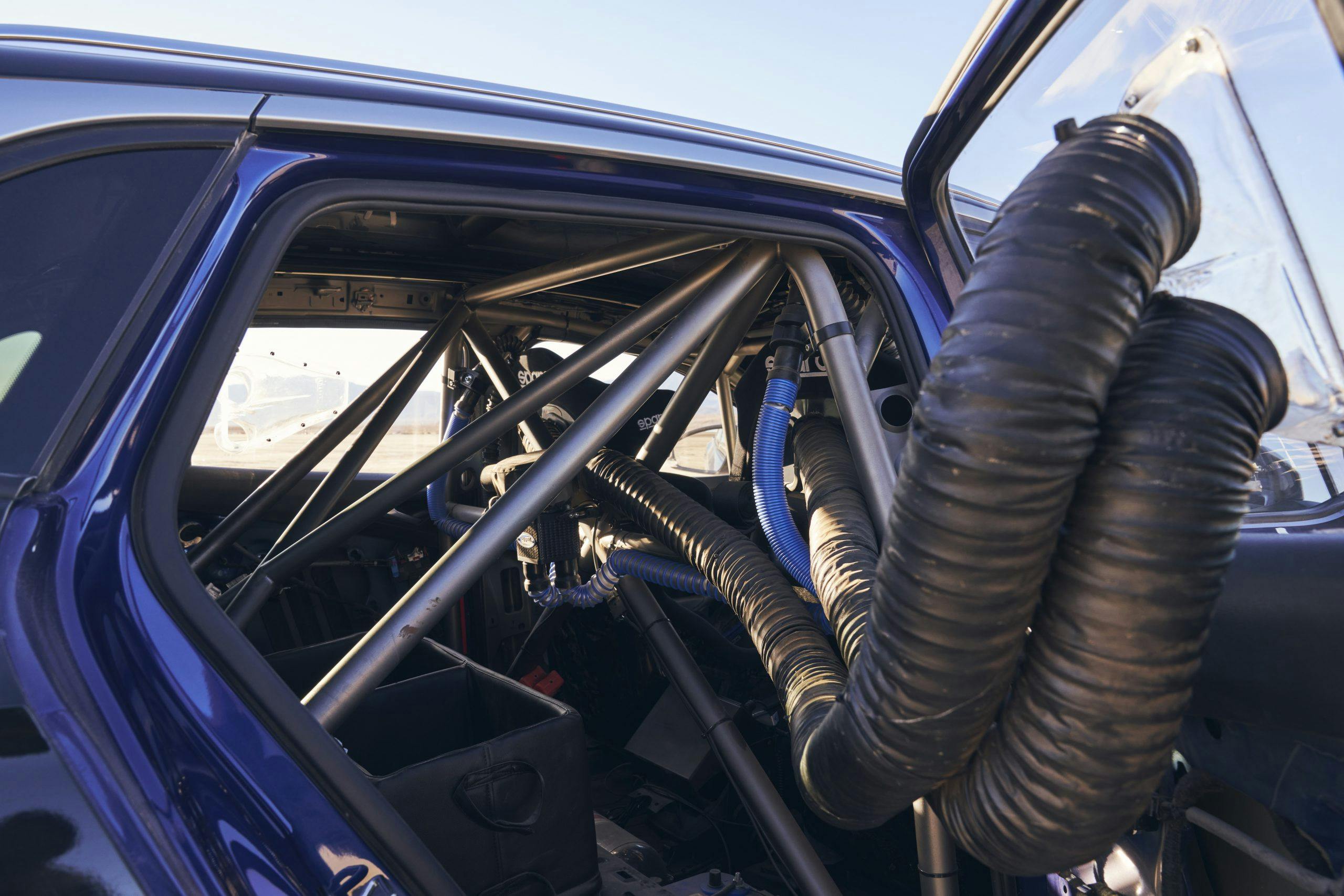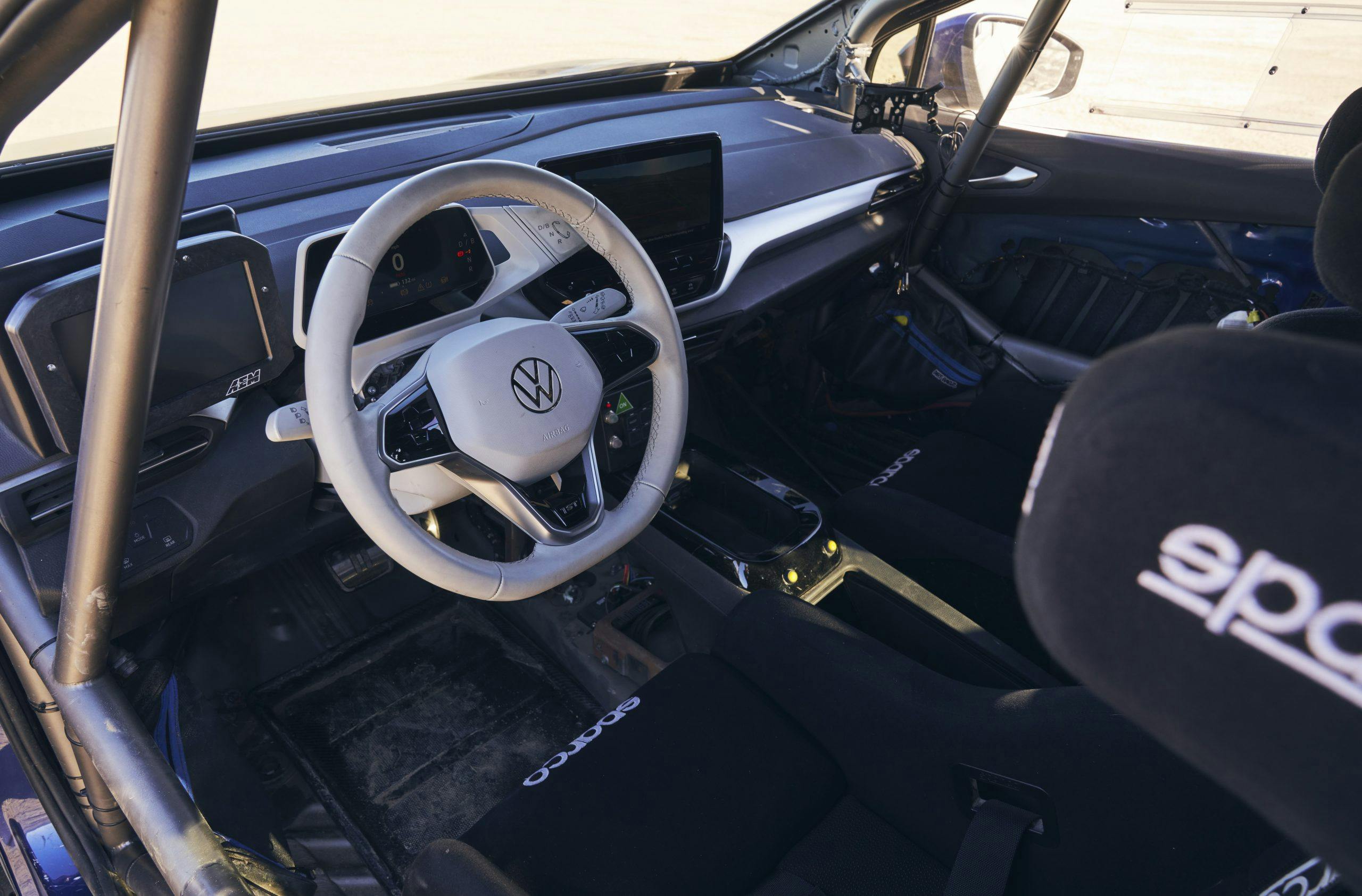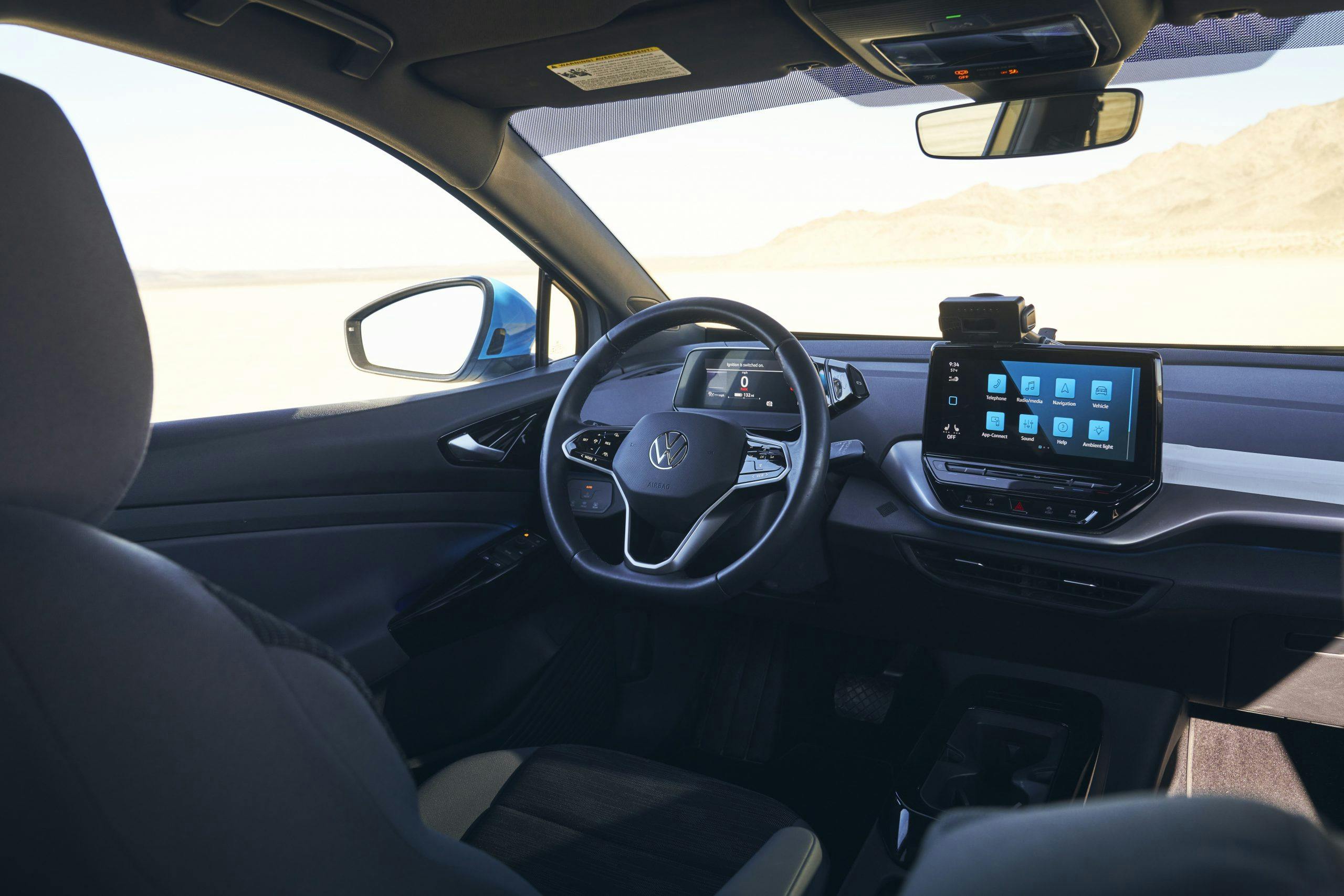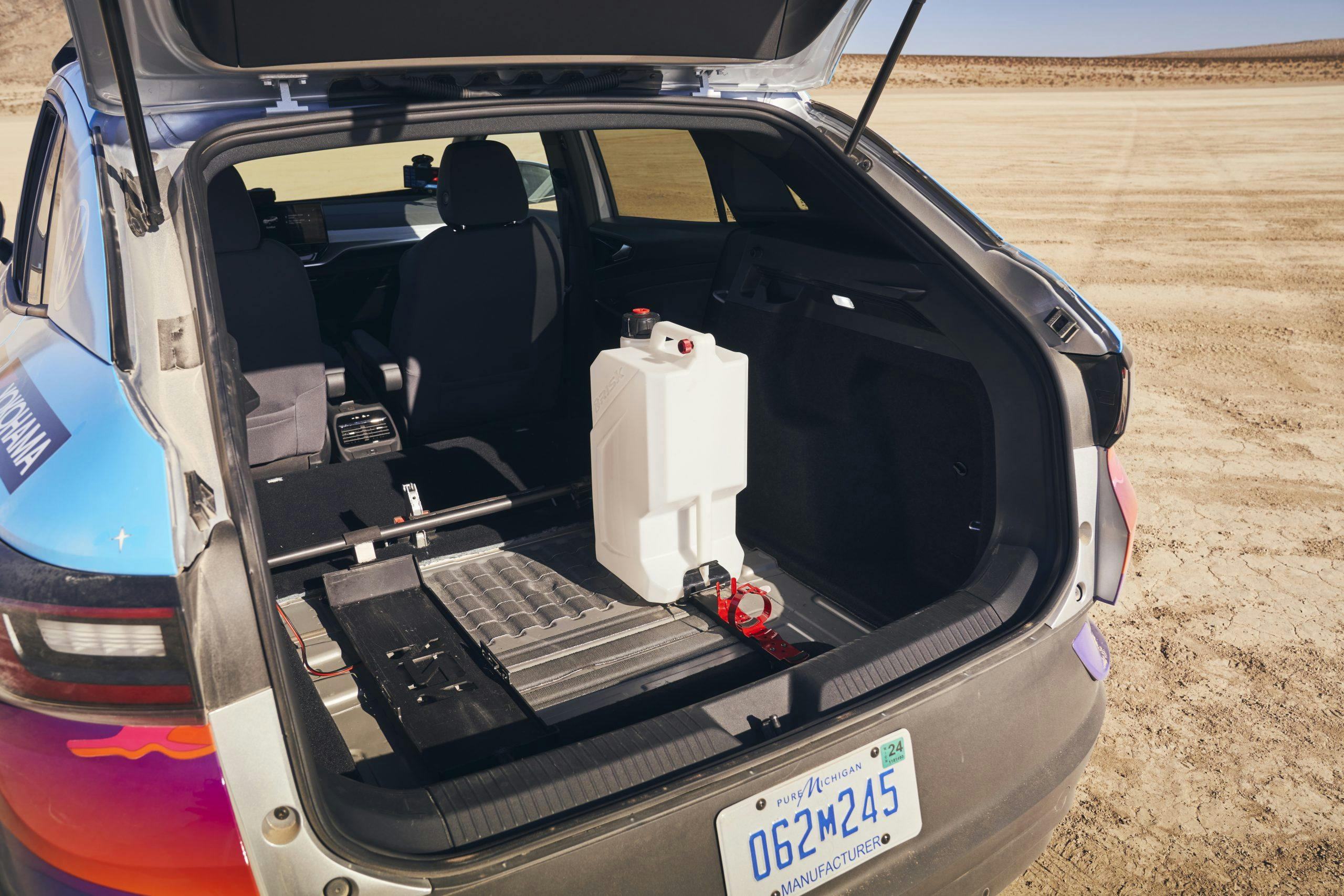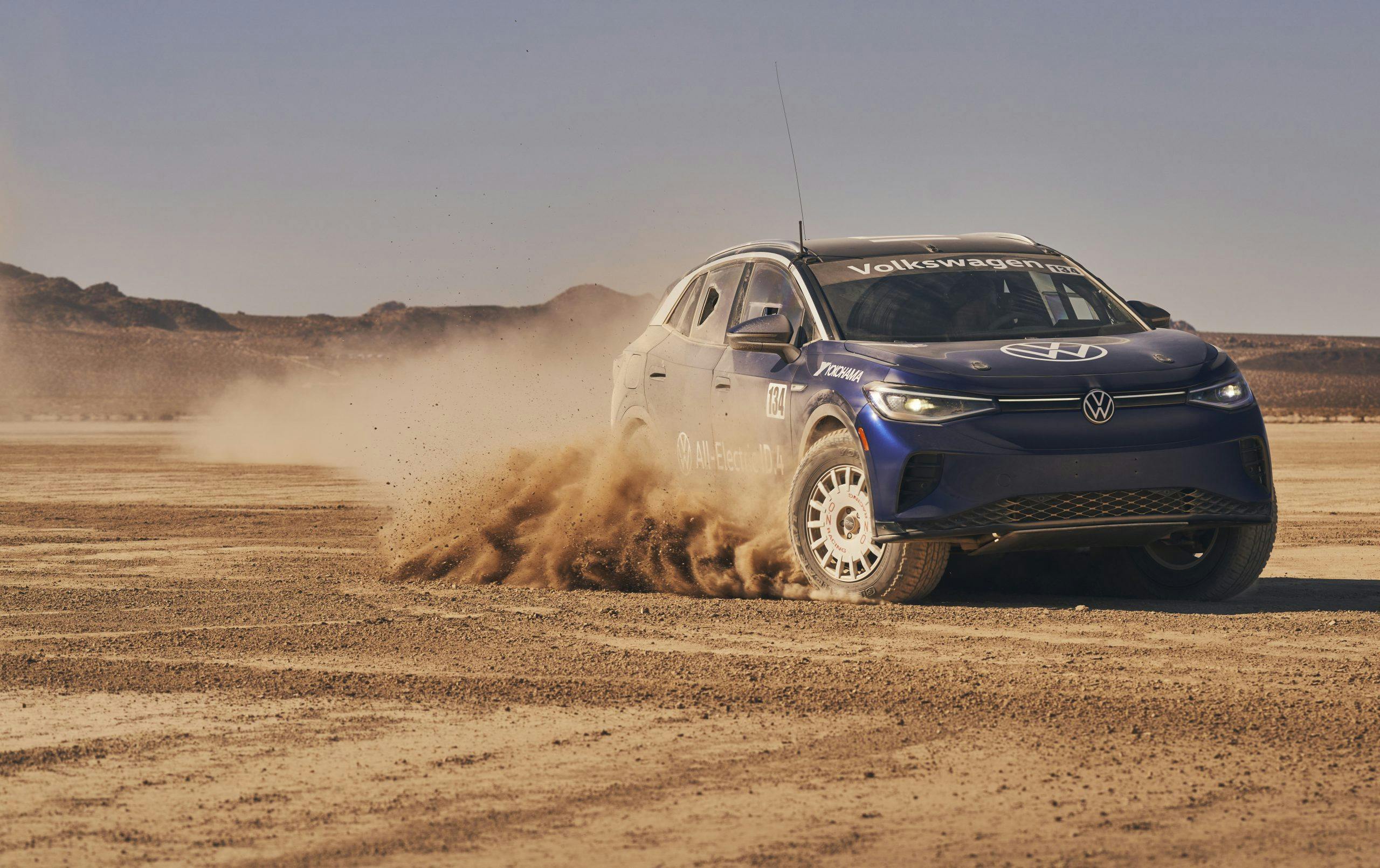Media | Articles
Slinging desert silt with two of VW’s pioneering electric off-road racers
A pair of Volkswagen ID.4s made history in 2021. Tanner Foust finished the NORRA Mexican 1000 piloting a rear-wheel-drive ID.4 and, later this past fall, driver Mercedes Lilienthal and navigator Emily Winslow completed the Rebelle Rally in an all-wheel-drive ID.4. Both race-veteran VWs were the first production-based vehicles to complete either event and Volkswagen invited me into the desert to get a taste of driving these electric off-road race vehicles. Off I went to Johnson Valley, home of King of the Hammers, to see how these battery-powered crossovers conquered the desert.
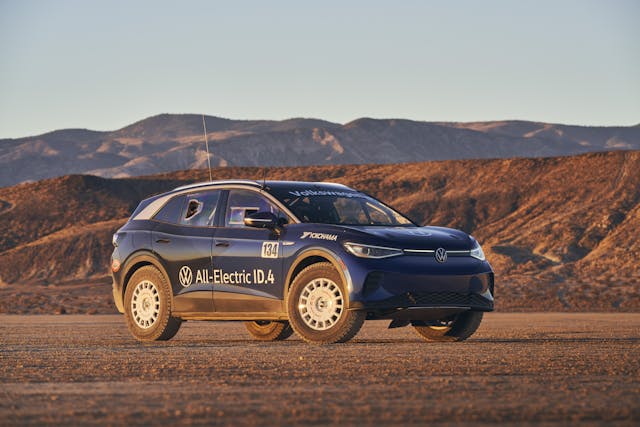
Each of these vehicles feature a bit of off-road modification, but both use factory battery packs and drive systems. The rear-wheel-drive ID.4 that Tanner Foust used to complete the 2021 NORRA Mexican 1000 survived the entire course—a total distance of more than 840 miles.
Unlike the Baja 1000, which is run non-stop, the Mexican 1000 is run in stages, which made it the perfect venue to showcase the capabilities of a production-based electric vehicle (which was charged at each stopping point). The stages, spaced 37 to 167 miles apart across Mexico’s Baja Peninsula, pit drivers and their vehicles against some beautiful but challenging desert terrain. Foust’s ID.4, built in tandem by Tanner Foust and Rhys Millen Racing, is the more heavily modified of the two VWs I got to drive. The crossover still has its dash and instrument panel, but much of the remaining interior was stripped to make it easier to install a roll cage. That meant that climbing into the driver seat was just a bit more difficult—yours truly is a few sizes larger than Mr. Foust, so the best way to describe my position in the race seat is probably “wedged.”
The ID.4 used in the Rebelle Rally, on the other hand, looked very normal in comparison. Save for the rear-seat delete that helped the crossover accomodate more cargo and some additional navigation equipment required for the rally, this one looked absolutely factory-spec.
A peek under the chassis revealed that this ID.4, like its NORRA-racing cousin, also uses a suspension from Tanner Foust and Rhys Millen Racing. If you’ve never heard of the Rebelle Rally, it’s billed as “the first women’s off-road navigation rally raid in the United States.” It’s a grueling, eight-day event that covers more than 1500 miles and challenges drivers and navigators to find a way to their destination each day despite any obstacles. The event spans the deserts of California and Nevada and requires endurance from driver, navigator, and of course, vehicle. VW invited me to drive the same ID.4 that driver Mercedes Lilienthal and navigator Emily Winslow used this fall.
Marketplace
Buy and sell classics with confidence
What I found most interesting was how much more fun the Rebelle Rally ID.4 was to drive than its more-modified relative. Foust’s 201-hp rear-drive version seemed easier to drift and slide—which was entertaining, don’t get me wrong—but the AWD ID.4 brought 295 hp and 339 lb-ft of torque to the table along with a traction-control system that really seemed to know what it was doing. Even with very little time behind the wheel, I quickly learned to pivot the all-wheel-drive version around the silty track VW provided. Foust’s version could be coaxed into a drift by simply lifting off the throttle and/or trail braking, but the all-wheel-drive ID.4 made the feat much easier.

Foust’s desert conveyance rides on some taller tires that help it absorb more punishing whoops and unexpected obstacles that can lurk in the sand and brush. On the topic of unexpected: The one part about driving an electric race vehicle that’s tough to get used to is the sound. When driving on-road electric vehicles, the whirring of the motors and the general quiet of the whole experience is strange but only just a bit disconcerting.
The strangest part of each driving experience, however, was what I could hear. In both iterations of ID.4 I drove, the suspensions, while based on the factory steering-knuckle, had been upgraded with tubular control arms with heim joints. If you’ve driven with these components on a race car, you may appreciate them for their direct, unflinching communication of road surfaces thanks to a total lack of bushings. Heim joints are also very strong, hence their use in racing, both on and off-road. Those same virtues come with some drawbacks—namely, noise. The suspension of both ID.4s clanged and banged over whoops, and thanks to their nearly silent drivelines, the suspension seemed as if it were audibly protesting the punishing terrain.

The other strange side effect of an electric powertrain was a disconnect from the vehicle’s speed. I hadn’t realized how much I had tied an engine’s sound and a transmission’s gear position to a vehicle’s velocity until I was on an open, dry lakebed without nearby visual cues. I imagine VW’s factory drivers had to exert some discipline to keep speeds reasonable and not simply keep accelerating across the desert.
Aside from the quiet powertrains, each of the ID4s desert racers proved to be everything you’d expect from an off-road racer. We’re only going to see more entries like these as EV technology trickles down from OEMs into the hands of enthusiasts. While they may never be as iconic as a dusty Class 11 Bug, each of these ID.4s lived up to VW’s Baja-conquering reputation and are helping pave the way for future electric entries.


